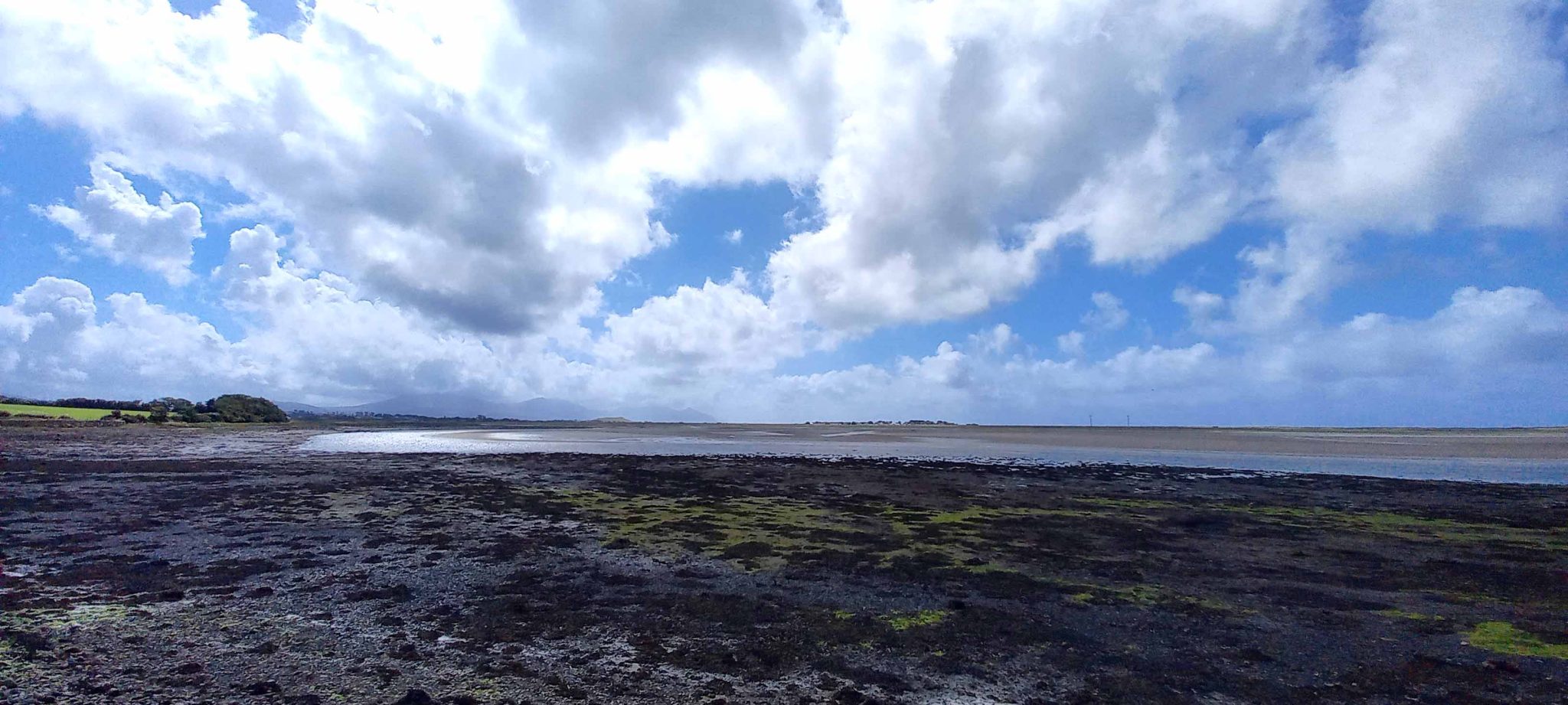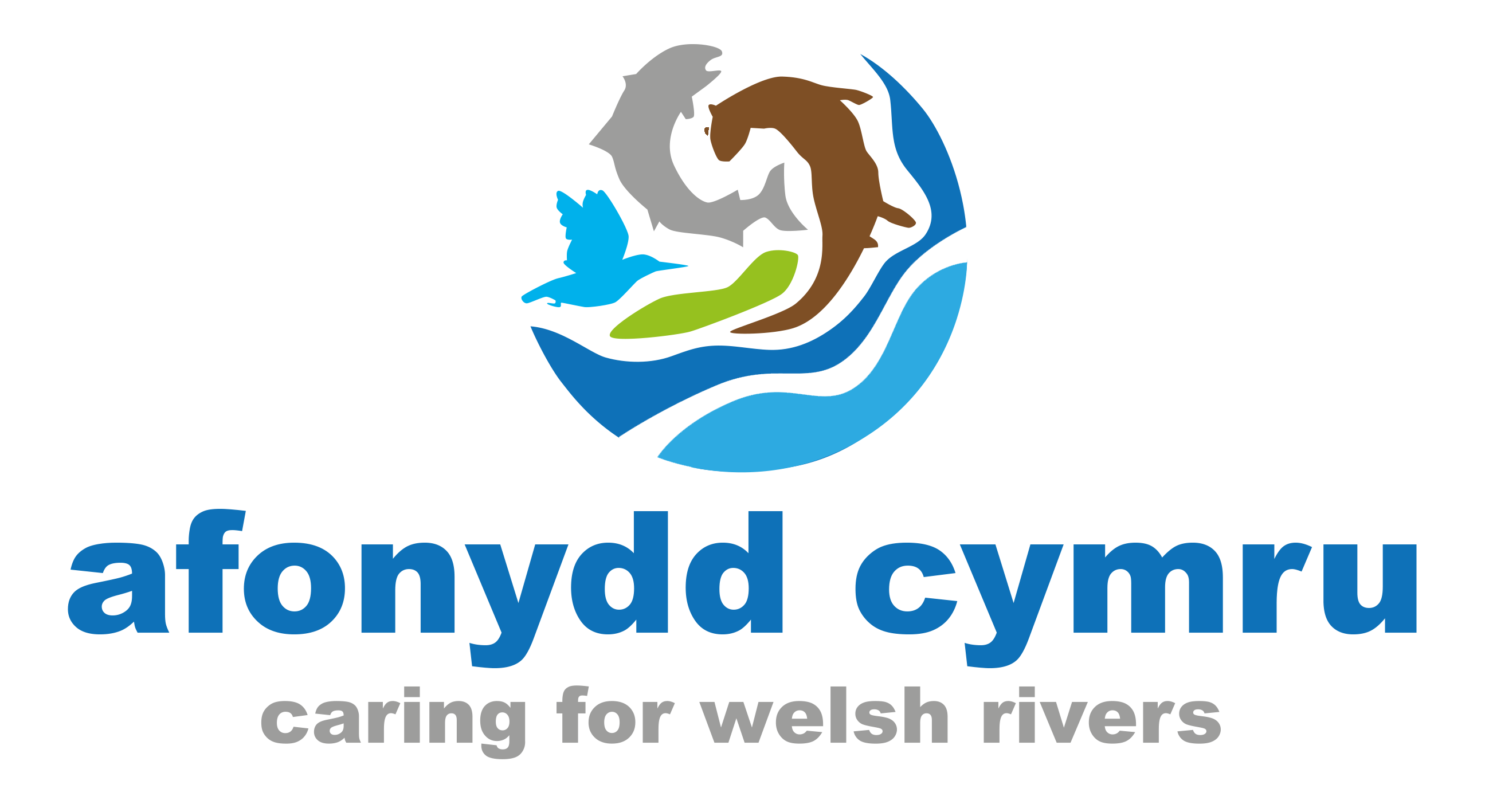August 2023
The short Afon Gwyrfai is typical of many of the rivers in north-west Wales. Starting on the slopes of Yr Wyddfa (Mount Snowdon), it passes through two llyns (Llyn y Gader and Llyn Cwellyn) before joining the sea after just 13 miles at Y Foryd in Caernarfon Bay.
The Gwyrfai is one of the nine Special Area of Conservation (SAC) rivers in Wales. Its designated species includes Atlantic salmon, which tend to run the river late in the year to spawn. As a result, the number caught by anglers each year is low but electrofishing surveys have shown that the river supports good numbers of juvenile salmon.

Afon Gwyrfai at Waunfawr.
Llyn Cwellyn and the Gwyrfai downstream has one of the largest and most diverse populations of floating water-plantain in Britain. The llyn is also home to one of three remaining populations of Artic char in Wales. Named “Torgoch” (red belly) in Welsh, it is a spectacularly coloured fish and an ancient relative of the salmon. A specialist of deep, glacial lakes, Torgoch is an iconic species of North Wales.
In his 1998 book “Chwedlau a Choelion Godre’r Wyddfa” Dafydd Whiteside Thomas wrote about an old belief in a network of underwater tunnels, known only to the char, that linked Cwellyn with other nearby llyns where the fish were found. According to the belief (Llwybr y Torgoch), the char would use these secret routes to appear in the llyns at different times; in Llyn Padarn in December and Llyn Cwellyn in January, for instance.
Arctic char (Salvelinus alpinus).
Downloadable Afon Gwyrfai factsheet.
In the 1530s John Leland, a minister for Henry VIII travelled around England and Wales recording his sovereign King’s lands – the parishes, churches, towns, villages and estates along with the lakes and rivers, presumably because of their value as fisheries. His chronicles refer to the char of Cwellyn, confirming their presence in the llyn’s previous name, Llyn Tarddyni.
“In these two pooles be redde belly fishes, called thorr gough (Tor goch) id est, thori aut pectoris rubri. There be also some of these in Linne Tarddynni, (Ca welly n) and in Linne Bala deulynn, (Llan-llyfni Lakes); they be taken in these three pooles in order, and taken in one and not seen in the other.”
Nowadays, the last three remaining Welsh populations of Arctic char face several, human-made threats including climate change, pollution and forestry. North Wales Rivers Trust have been running their “Saving The Torgoch”, identifying the measures needed to protect the species and campaigning to designate a sanctuary for its survival. Earlier in August, the trust announced it had secured £249,300 from the Heritage Lottery Fund to protect the last remaining Torgoch populations in Wales.
Once renowned for its slate mines, the Gwyrfai valley has a rich human history too. Dafydd Whiteside Thomas mentions “Y Garreg Bechodau” or “The Stone of Sins”, a flat rock beside the river at Gwredog. When someone died it was the practice to bake a cake using the finest possible ingredients and lay it on the deceased’s chest. All their sins would then be drawn from the body and into the cake, which would then be carried carefully down to the river and left on the Garreg Bechodau.
In due course the “Sin Eater” would pass by and consume the cake, so by taking all the sins of the deceased. The family needed to use only the finest of ingredients to make sure that every crumb was eaten and none left behind. According to Thomas, John Aubrey wrote of a similar tradition in Hereford in the 17th century.
With the slate mines long-closed the Gwyrfai catchment is now dominated by agriculture and in particular, sheep farming. It is also important for tourism as much of the catchment is within Eryri (Snowdonia) National Park.

The Gwyrfai’s estuary at Y Foryd.
Acknowledgements:
We would like to thank Dr Robin Parry, trustee of North Wales Rivers Trust for providing much of the information and photos used in this page. Our thanks also to Huw Hughes, Secretary of Seiont Gwyrfai & Llyfni fishing Society.
Further Information:
North Wales Rivers Trust – Saving The Torgoch
JNCC – Afon Gwyrfai a Llyn Cwellyn, Designated Special Area of Conservation (SAC)


